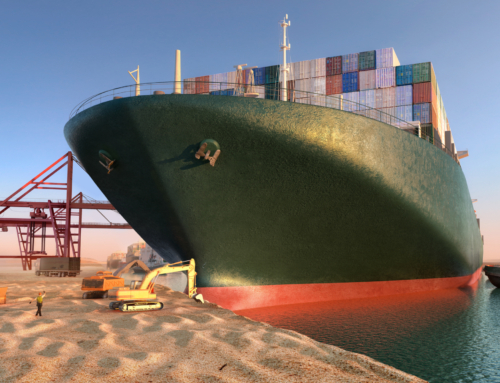The fact that humans are creatures of habit is nothing new. They are reluctant to change their familiar behavior patterns. It usually takes 21 days to learn a new habit, and two to three months for something to really become ingrained in the thought pattern. But what if we find ourselves in a situation where this time is not available and we have to act immediately? Is the human being able to adapt his behavior adequately to the situation and act outside his regular patterns?
Unfortunately, the answer is often no. In a situation which is overwhelming, such as a time-critical situation for many people, people tend to fall back into familiar behavioral patterns and rely on familiar processes. This is because these very actions can be recalled quickly under time pressure and a sense of competence is created as the person feels confident in what they do on a day-to-day basis. Often, however, routine behavior is not the best and most effective solution in an overwhelming situation. An overwhelming, or complex, situation exists when the challenge exceeds one’s resources. The extent of one’s resources varies from person to person. However, they always include personal, technical and organizational components. For example, resources include ways of coping with stress, education, support from computers, software, etc., but also sufficient personnel.
Also situations, which mean a strong emotional load, are predestined to cause a feeling of excessive demand in individuals. Since resources and previous experiences vary considerably from person to person, it is not possible to make a general statement about when a situation is perceived as overwhelming or how a person deals with a stressful situation. These are situations outside day-to-day life, outside our regular actions, so that the usual behavioral patterns are not sufficient to adequately address the complexity of the situation.
If the challenge is different, so should be our behavior. Sounds logical, but it poses a problem for a lot of people in overwhelming situations, because we feel much less confident in acting in unknown situations, and it is precisely this confidence in acting that we would like to retain. Confidence in action arises from a feeling of competence. And in what we do every day, as already mentioned, we feel confident and competent. That’s why we don’t want to deviate from it, even if the situation is completely different.
To maintain our sense of competence despite being overwhelmed, there is the phenomenon of the cognitive emergency response. The cognitive emergency response ensures that the person goes into a kind of automated state. Self-reflection takes place less or not at all at that time, and the person tends to act more quickly. Among other things, this increases the willingness to take risks, but also the tendency to flee from the situation. All this is accompanied by an increased adrenaline level as well as an increased pulse and a faster breathing rate. These are symptoms that everyone has probably felt at some point in a stressful situation.
The way of dealing with that varies. Some succeed in calming down through relaxation exercises and regaining a clear head. Others find this more difficult and hope to get the situation under control by acting quickly and thus ultimately regain their own calm quickly. This is exactly one of the problems of the cognitive emergency response, because if it becomes more important to do something than to take a step back, to look at the situation from a different angle and first think, plan and develop a strategy that would allow us to act more effectively and better, we do not come closer to overcoming the challenge. Instead, we focus on the things we can manage with the tools and resources that are available, known, and with which we are familiar and feel competent. Although a sense of competence may be present within the affected person as a result of the cognitive emergency response, they often are not, and they are limited in their ability to act. The cognitive emergency response is a dysfunctional protective mechanism of the person, which only maintains the feeling of action security and competence. But it does not lead to mastering the situation.
An example: At Cologne Central Station, several trains are cancelled due to a sudden storm. A rail replacement service is established and several hundred people queue up at the information stands, wanting information on how to get to their destination. The employees at the information booths do what they always do – they inform one person after the other. In doing so, they feel safe, that’s the process they know. But is giving the same information 100 times in a row the most effective method? Probably not. The staff is so focused on working through the challenge of the crowds in front of them one by one that it doesn’t occur to them to take a step back, consolidate the information, and inform everyone at once by making an announcement and displaying it on the information boards. By maintaining the regular course of action, the feeling of competence is maintained among the employees and the appearance of their own ability to act is created. A change of the course of action is not considered.
Such behavior becomes particularly problematic when the person is in a crisis team, for example, because an assessment of the situation only takes place to a limited extent, if at all. Since there is no self-reflection and a resistance to criticism and suggestions for improvement sets in, opposing voices are not heard or taken seriously. It can also happen that these people are (un)consciously ignored or even excluded from relevant meetings. If the head of the crisis team is affected by a cognitive emergency reaction, this can have an impact on the current situation of the entire company. And also on the future of the company if action is not taken adequately to the corresponding situation. It is not uncommon for the cognitive emergency reaction to ensure that plans are drawn up, but that they are not based on reality or are not implemented. The plans exist only on paper, since an implementation would show where problems are, and thus the feeling of competence could be lost. In order to maintain this feeling, whole blocks of information are blocked out by the cognitive emergency reaction, so that the situation still appears to be controllable and the person concerned thus appears to be competent. If all these characteristics combine in the position of the leader of the crisis team, the entire crisis team is de facto incapable of acting.
What, however, can be done to prepare oneself and also the employees in the company for situations outside of everyday business and thus prevent a cognitive emergency reaction?
How can the effect ultimately be achieved that a functional ability to act is maintained among the decisive persons in an extraordinary situation?
The keyword is preparation. Both for potential scenarios such as fires, cyber attacks, power or production outages, and for one’s own response. This preparation is achieved by strengthening and increasing resources. Resources should be taken on the emergency prevention side as well as on the emergency response side. These can be measures such as emergency plans, as well as the creation, preparation and training of an emergency prevention and management organization, i.e. a crisis team. In order for this crisis team to feel safe in extraordinary situations in which it meets and thus be able to act, it is indispensable to clearly define roles and their competencies. The people who make up the crisis team, as well as their representatives, must be both informed about their role and ideally familiarized with their function through training, exercises and tests, so that the performance of the crisis team’s work is familiar to them. Once this is achieved, a cognitive emergency response is less likely to occur because there is a certainty of action regarding the work involved. Simulated emergencies can also be used to acquire further competencies outside of pure crisis team work. This is because participants experience their own and others’ reactions in exercises. This prepares them to act in a team in which they do not normally work, as many different areas come together. This results in other positive side effects, such as everyday situations causing a lower stress response and a greater understanding of the work of other departments and areas of the company. This leads to increased resilience in your company and healthier employees.
If you would like to take action for your company to prevent cognitive emergency reactions, feel free to contact us!






